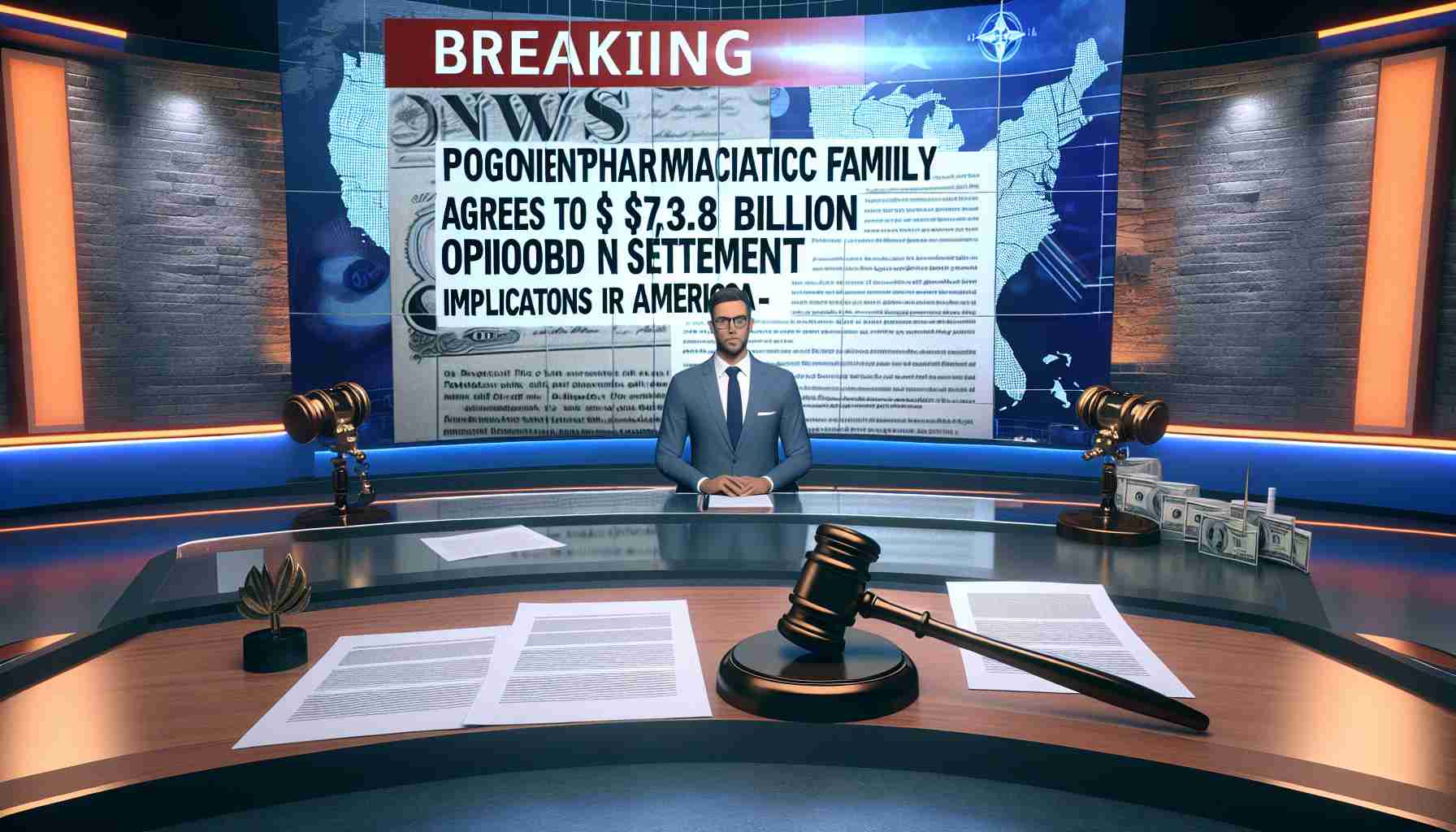- The Sackler family and Purdue Pharma will pay $7.4 billion to address their responsibility in the opioid crisis.
- The agreement includes $6.5 billion from the Sacklers over 15 years and $900 million from Purdue Pharma.
- This settlement results in the Sacklers losing control over Purdue Pharma, ensuring opioids cannot be sold under its name in the U.S.
- A state-appointed board will oversee Purdue’s future to maintain accountability.
- Funds from the settlement will support opioid addiction treatment, prevention, and recovery programs.
- The settlement underscores the severe repercussions of corporate greed in the healthcare sector.
- Stricter regulations and enhanced support for recovery are anticipated outcomes of this pivotal agreement.
In a landmark move, the Sackler family and Purdue Pharma have agreed to pay $7.4 billion to resolve their role in the devastating opioid epidemic that has claimed over 500,000 lives in the United States. New York’s Attorney General Letitia James announced this sweeping agreement, highlighting the family’s relentless pursuit of profits from their addictive painkiller, OxyContin.
Under the terms of this unprecedented settlement, the Sacklers will disburse $6.5 billion over 15 years while Purdue Pharma will contribute an additional $900 million. The deal effectively ends the family’s control over Purdue, ensuring that opioids can no longer be sold in the U.S. under its name. A board chosen in consultation with state representatives will oversee the future of the company, ensuring accountability and eliminating any political influence.
This decision follows a tumultuous legal battle and comes after the U.S. Supreme Court voided a previous agreement that shielded the Sacklers from accountability. As part of the new arrangement, funds will be directed toward vital programs for opioid addiction treatment, prevention, and recovery over the next 15 years.
The Sacklers marketed OxyContin aggressively despite knowing its addictive nature, leaving a trail of destruction in their wake. This settlement stands as a critical step towards healing a nation grappling with the aftermath of one of the worst health crises in history and serves as a stark reminder of the grave consequences of corporate greed.
As this chapter in America’s fight against opioids unfolds, the hope is that stricter regulations and increased support for addiction recovery will pave the way for a healthier future.
A Game-Changer in the Fight Against Opioid Epidemic: The Sackler Settlement Explained
Overview of the Settlement
In a landmark decision, the Sackler family and Purdue Pharma have agreed to a monumental $7.4 billion settlement, addressing their role in the opioid crisis that has resulted in over 500,000 fatalities in the United States. New York Attorney General Letitia James heralded this agreement, emphasizing the family’s pursuit of profits through the highly addictive painkiller, OxyContin.
Key Terms of the Settlement
Under the settlement’s terms, the Sackler family will pay $6.5 billion over the span of 15 years, while Purdue Pharma will contribute an additional $900 million. This monumental deal signifies the family’s relinquishment of control over Purdue Pharma, ensuring that opioids will no longer be marketed or sold under its auspices. A board selected in consultation with state representatives will supervise the future of the company, enhancing accountability and precluding political influence.
Implications for the Future
This landmark ruling follows a series of contentious legal battles, particularly after the U.S. Supreme Court annulled a previous agreement that shielded the Sacklers from accountability. Critically, a significant portion of the funds will be allocated for essential programs focused on opioid addiction treatment, prevention, and recovery over the next 15 years.
Insights and Predictions
The settlement illustrates a pivotal step towards healing a nation grappling with the aftermath of the opioid crisis. It also serves as a stern reminder of the dire repercussions of corporate negligence and greed. As heightened regulatory measures and greater support for recovery initiatives come into play, there is hope for improved public health outcomes moving forward.
Three Important Questions
1. What will the $7.4 billion be used for?
The funds from the settlement will primarily be directed toward programs designed to combat opioid addiction through treatment, prevention, and recovery efforts. This includes initiatives like rehabilitation services, education programs, and outreach for those suffering from addiction.
2. Will the Sackler family face criminal charges?
While the civil settlement removes their financial interest in Purdue Pharma and aims to provide restitution for victims of the opioid crisis, the Sackler family has not been criminally charged. Critics argue that this lack of criminal accountability underscores flaws in the justice system regarding corporate malfeasance.
3. How will this settlement affect future pharmaceutical regulations?
The agreement is expected to prompt stricter regulations around opioid prescriptions and marketing. It could also inspire legislative changes at both the state and federal levels to prevent similar crises from occurring in the future. Moreover, it may lead to enhanced transparency in pharmaceutical practices.
Related Links
For further insights and detailed information regarding the opioid epidemic and the Sackler settlement, visit New York Times and Washington Post.
